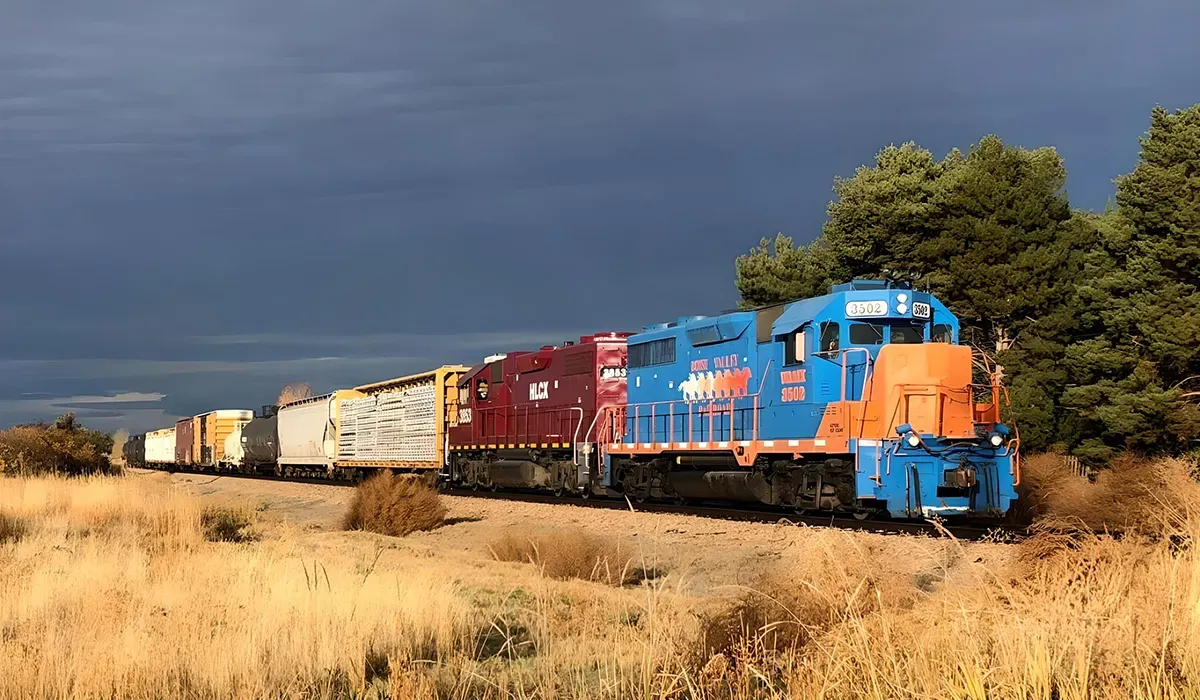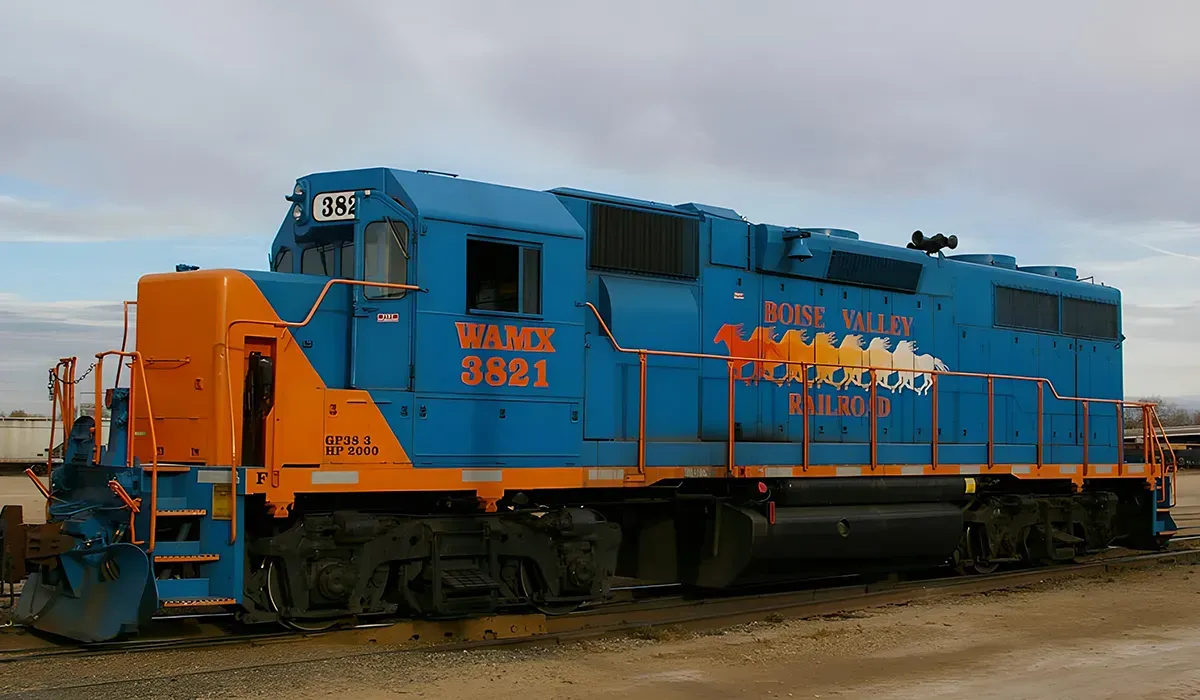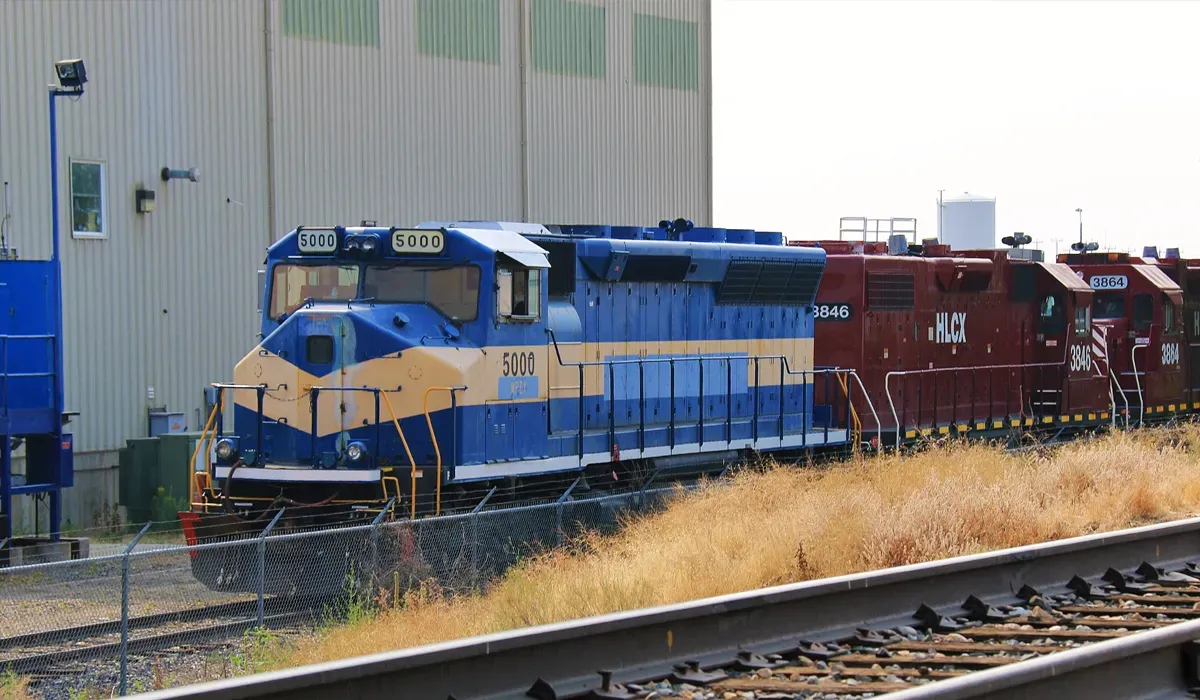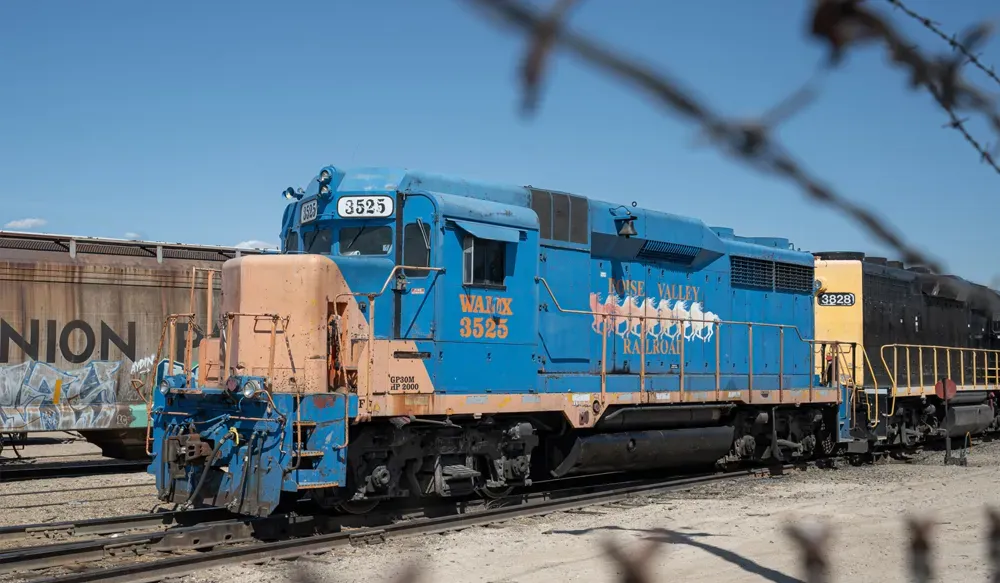SHORT LINE RAILROAD
Boise Valley Railroad moves Idaho’s agricultural economy with 36 miles of shortline track, serving 84 customers and hauling potatoes, lumber, fertilizer, and fuels since 2009. BVRR’s Wilder Branch and Boise Cut-off connect rural producers to Union Pacific’s national network, making it a vital link for the Treasure Valley’s bulk freight.


Boise Valley Railroad operates one of North America's most extensive shortline freight rail networks, connecting businesses across southwestern Idaho with safe, efficient, and environmentally responsible transportation solutions. The railroad’s network covers 36 miles, running from Wilder to Caldwell and from Nampa to southeast Boise, with primary freight including potatoes, lumber, fertilizer, fuels, asphalt, and scrap metal..

FOUNDING HISTORY & ORGANIZATIONAL STRUCTURE
The Boise Valley Railroad was founded in November 2009 by Watco Companies to provide local freight service on lines leased from Union Pacific. Its original purpose was to serve agricultural and industrial shippers in the Treasure Valley, and there have been no major mergers since its inception..
HEADQUARTERS & OPERATIONAL BASES
The headquarters of Boise Valley Railroad is located at 100 PFE Drive, Nampa, Idaho 83651. This facility houses the general manager, operations, and customer service teams, and serves as the operational hub for dispatching, maintenance, and customer support..

LEADERSHIP & EMPLOYEES
Gary Wagenseller serves as General Manager of Boise Valley Railroad, overseeing day-to-day operations and customer relations. Brett Jensen leads the sales team, focusing on business development and customer acquisition. The executive team is supported by Watco Companies’ corporate leadership, which brings extensive experience in shortline and regional rail operations.
Boise Valley Railroad employs approximately 30 people, with about 20 serving as skilled craftspeople, maintenance workers, and service teams. The workforce is primarily focused on train operations, track maintenance, and customer service, with a strong emphasis on safety and operational reliability.
FACILITIES & OPERATIONS

Major facilities include the Nampa operations center, which serves as the main yard and maintenance base, and the interchange points at Caldwell and Nampa where BVRR connects with Union Pacific. The Wilder Branch serves agricultural shippers in Wilder and Caldwell, while the Boise Cut-off provides access to Boise’s industrial customers. Additional key facilities include customer sidings in Boise, Caldwell, and Nampa, as well as industrial development sites such as Boise Site I.

Boise Valley Railroad complies with all Federal Railroad Administration safety regulations and has maintained a strong safety record since its founding. The company participates in Watco’s corporate safety programs and pursues continuous improvement in safety culture, though there are no specific ISO or environmental certifications publicly listed.
EQUIPMENT & INFRASTRUCTURE
BVRR handles a variety of railcar types, including boxcars for lumber and paper, covered hoppers for fertilizer and grain, tank cars for fuels and asphalt, and flatcars for bulk materials. Typical train lengths are 25 to 30 cars, and the railroad is equipped to handle both full carload and less-than-carload shipments.
The railroad uses Watco’s centralized dispatch and customer service systems, which include real-time tracking, electronic billing, and customer portals for shipment status and documentation. BVRR also utilizes RMI for information exchange with Union Pacific and other partners, supporting efficient interchange and operational coordination.
Boise Valley Railroad serves southwestern Idaho, specifically the cities of Wilder, Caldwell, Nampa, and Boise, with a total of 36 route miles. The key corridors are the Wilder Branch from Wilder to Caldwell and the Boise Cut-off from Nampa to southeast Boise, with trackage rights on Union Pacific between Nampa and Caldwell.
Strategic partnerships include close collaboration with Union Pacific Railroad for interchange at Nampa and Caldwell, as well as relationships with major shippers such as J.R. Simplot, Boise Paper, Snake River Oil & Gas, and Idaho Asphalt Supply. BVRR also works with local economic development agencies to support industrial growth.

FINANCIAL METRICS & STABILITY
In 2024, Boise Valley Railroad reported a pre-tax profit of $2.1 million on revenues of $12.5 million. The company’s operating ratio improved to 82 percent, reflecting enhanced operational efficiency.
Recent capital investments include upgrades to track infrastructure and yard facilities totaling $1.5 million in 2023, with a focus on improving safety and capacity. There have been no major acquisitions since the railroad’s founding in 2009.
SERVICE PORTFOLIO

Boise Valley Railroad offers a range of logistics services, including full container load and less than container load shipments for agricultural, industrial, and bulk commodities. Additional services include transloading, warehousing, and customized switching for local industries, as well as coordination with customs brokerage and cargo insurance providers through Watco’s logistics network.

BVRR has launched a customer portal to enhance self-service capabilities and streamline shipment tracking, billing, and documentation. The company also offers an API center to facilitate integration with customer supply chain systems, supporting real-time data exchange and operational transparency.
INDUSTRY REPUTATION & NEWS
Recently, Boise Valley Railroad has been working with the city of Boise to explore the development of a dedicated multimodal freight facility, aiming to expand rail access for local businesses. The company has also implemented new safety and efficiency measures, including automated train inspection systems and enhanced customer communication tools.
Boise Valley Railroad’s site certification program identifies optimal rail-served sites and conducts in-depth reviews to ensure readiness for industrial development. The company has received recognition for its safety performance and commitment to supply chain efficiency through Watco’s corporate awards.
ANALYSIS & FUTURE OUTLOOK